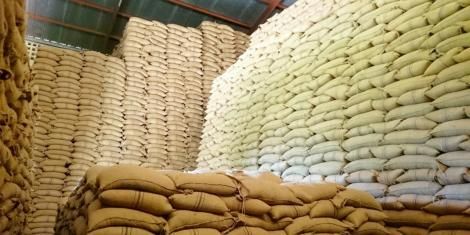Erratic rainfall and insecurity are keeping cereal production in East African region at below-average levels, the Food and Agriculture Organization (FAO) has warned.
According to FAO’s Crop Prospects and Food Situation report, in northern parts of the subregion, including the Sudan, South Sudan, the Karamoja Region in Uganda, Eritrea, Ethiopia and in central and western Kenya, production prospects of the 2023 main season cereal crops, harvested between October and December, are mixed.
In key areas of Central, Rift Valley and Western provinces of Kenya, “long-rains” crops benefited from average to above-average rainfall amounts. The aggregate “long-rains” maize production is estimated at 5 to 10 percent below the five-year average, as erratic rainfall resulted in reduced harvests in these locations.
“In Kenya, in the 23 counties classified as rural Arid and Semi-Arid Lands (ASAL), covering most of the country, about 1.5 million people are estimated to face severe acute food insecurity between October 2023 and January 2024. This figure amounts to about 10 percent of the analysed population, compared to almost 30 percent in the same period of the previous year,” the FAO said.
- In the Sudan, the ongoing conflict has affected the 2023 cropping season. In Greater Darfur and Greater Kordofan regions, insecurity impeded access to fields, resulting in reduced plantings.
- Crop production is expected to be below average in the agropastoral Karamoja Region of Uganda, mainly due to an erratic rainfall.
- In Eritrea, average rainfall amounts were recorded during the 2023 June−September rainy season and, despite some dry spells, cereal production prospects are favourable.
In Ethiopia, overall production prospects for the main crops are favourable, as above-average rainfall amounts boosted yields in western key-growing areas of Amhara and Benishangul Gumuz regions. However, insecurity due to conflict in some areas of Amhara and Oromia regions, and insufficient rains in some central and southern areas in Oromia and former SNNP regions have likely resulted in localized shortfalls in cereal production.
El Niño conditions, currently present and forecast to continue early next year, are likely to lead to above-average October–December rainfall amounts across the subregion, boosting yield expectations. However, given the increased risk of floods, significant crop and livestock losses may occur in localized areas.
The total cereal import requirement for Low‑Income Food-Deficit Countries (LIFDCs) in the 2023/24 marketing year is forecast at 49.6 million tonnes, 6.2 percent above the five-year average. The foreseen uptick is driven mostly by an increase in import needs among East African countries, which reflects two years of drought-stricken harvests and a likely low production in 2023.
One in Five People Face Hunger in Africa – FAO (kenyanwallstreet.com)




